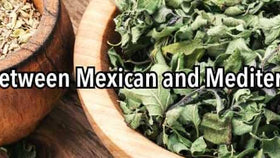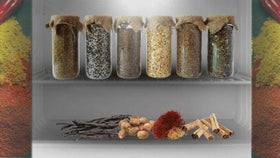Do All Orchids Produce Vanilla Beans?
The aromatic beans adored worldwide for their unmistakable flavor may be easy to obtain from stores for the most part, but finding them in nature isn’t likely to happen for the vast majority of the people around the world. The growth regions are limited to climates that are conducive to the particularities of orchids, primarily tropics with high humidity and warm temperatures. That said, just because orchids are able to thrive in one location, doesn’t mean that vanilla beans will be present.
You see, vanilla beans are not produced by every orchid. In fact, although there are approximately 30,000 species within nearly 900 genera of the Orchidaceae family, there is only one genus that will give rise to beloved vanilla beans. That genus is aptly named, Vanilla. It is a flowering vine that typically travels up the trunks of trees and gets its nutrients from the air.
Within that particular genus of orchid are over 100 different species of flowering orchids, yet very few of them are known to produce edible fruit. The primary species being cultivated to produce commercial vanilla beans are Vanilla Planifolia, Vanilla Tahitensis, and Vanilla Pompona. Though they are now considered different species of vanilla, both Tahitensis and Pompona are simply mutations or hybridizations of the original vanilla bean plant, Planifolia.
Now that you have a basic understanding of the Orchidaceae Vanilla, and have been thoroughly disappointed that the gorgeous orchid you purchased from your local grocery store’s floral department will not be delivering vanilla beans for you to use in your baking endeavors, let’s take a look at the differences of the vanilla orchids that do produce vanillla beans.
Vanilla Orchids Grown Commercially to Produce Vanilla Beans
Vanilla Planifolia
Vanilla Planifolia is thought to be the first recorded producer of vanilla beans. These plants are native to South and Central America, though they are now grown commercially in tropical regions and greenhouses worldwide. Like other vanilla orchids, they are vining plants that grow up trees and are epiphytic, deriving most of their nutrients from the air, rather than the soil. Vanilla Planifolia produce beans with high vanillin content, meaning that familiar vanilla flavor is very noticeable with these beans.
Want to try Vanilla Planifolia for yourself? Check out these Gourmet Madagascar Vanilla Beans.
Vanilla Tahitensis
As its name suggests, Vanilla Tahitensis is commonly found in Tahiti and surrounding areas. Although, it is now also being cultivated elsewhere. Tahitensis is believed to be a hybrid orchid generated by crossing Planifolia with another species of vanilla orchid, Vanilla Odorata, both native to Mexico.
Tahitensis vanilla beans are much different in flavor and aroma than Planifolia. They smell of flowers and fennel and exude a seemingly sweeter taste. They are plump in appearance and nearly bursting with vanilla seed. Get your hands on some Vanilla Tahitensis today!
Vanilla Pompona
Of the species of commercially produced vanilla orchids, Pompona is the least distributed. Its rarity has helped secure recent popularity among vanilla enthusiasts.
Pompona vanilla is native to Peru, Mexico, and other tropical areas of South America. Though, these days, Pompona vanilla beans are often grown in other parts of the world, such as these beans from the island of Madagascar. Like Tahitensis, Pompona vanilla beans are sourced from a hybridized plant—a cross of Planifolia and an orchid that presents by the same name, Pompona.
If you found this article interesting, you’ll probably also enjoy the following informational posts about vanilla beans:
Can You Grow Your Own Vanilla?
Understanding the Different Grades of Vanilla Beans







Slofoodgroup
Author